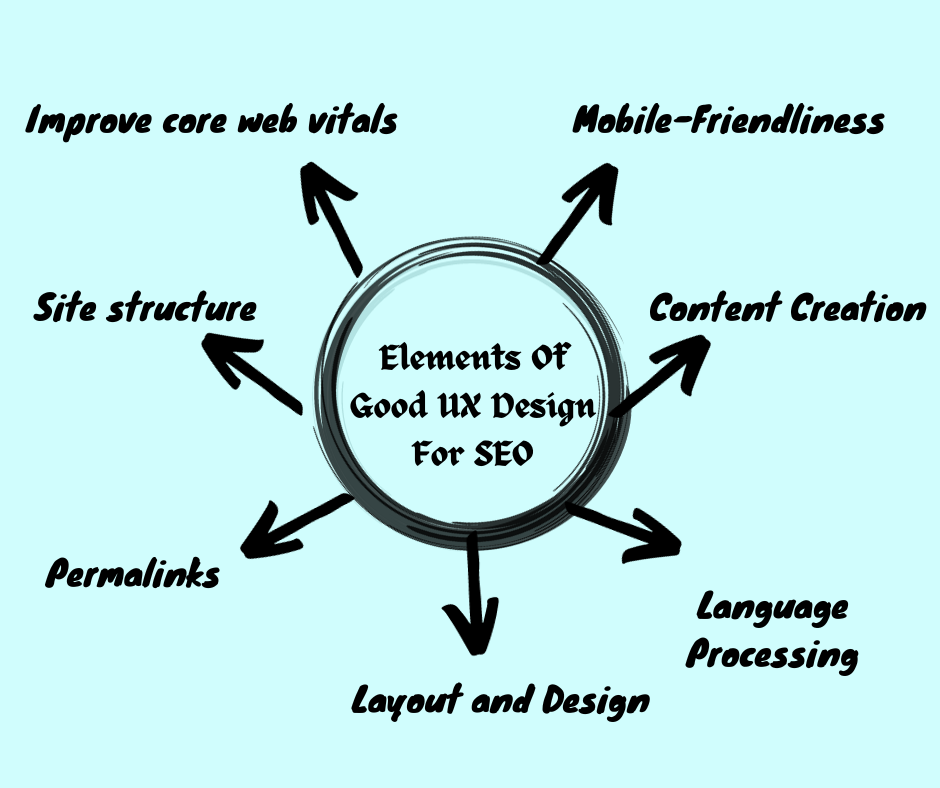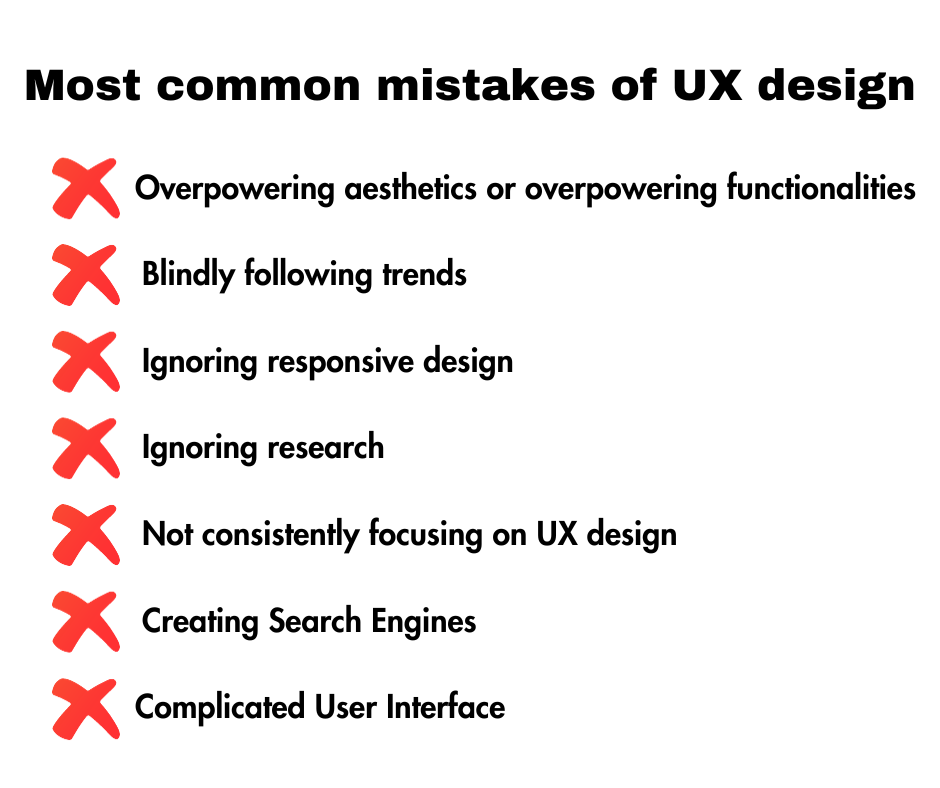Search engine optimization is linked to the user’s experience from the time it was practiced. It is an important element of SEO and will help enhance your site rankings. Let us dive deep into the topic and understand it better.
Page Contents:
What Is UX Design?
UX is the abbreviation of user experience design. The design How good UX design can improve SEO and help create products that provide a better user experience. It determines the interaction between the user and the product and services.
The UX design includes interaction designs, information architecture, visual design, and human-computer interactions. According to the Oxford Journal, the goal of UX is to improve customer satisfaction and loyalty through the utility, ease of use, and pleasure provided in the interaction with the product.
Why Is UX Design Important For SEO?
There are various reasons for UX being so important for SEO all the search engines are working to enhance the user experience. The UX design is the first step for on-page SEO. A good UX design will increase the time a visitor spends on your website.
The design also ensures that search engine crawlers know that your website is solving the problems of the users. In addition, it reduces the time spent on reworking the product by 50%. UX design being essential for digital branding can increase business credibility and customer loyalty.

The Process Of UX Design
The process of UX design can be divided into five steps. The process is simple and will help you to get the most out of your UX design. Let us now dissect and understand the process of UX designing in detail:
1. Ideas for UX design
The main and most important step is getting and creating ideas for the UX design. Once you have an idea then only you can work on the further step. Don’t evaluate or judge anything in the starting try to be as creative as you can. Note all the points and move to the next step.
2. Research
Once you have to plot to work the next step is to know the audience and their needs. In this step, you analyze and evaluate your ideas according to the needs of the people. You cannot rely only on your experience and assumption users’ opinion matters a lot.
User research will conclude what exactly user experience is for your potential customers. This will help you to choose the best track for your UX design strategy. You may take interviews, conduct online surveys, and create customer personas for your user research.
3. Design
The next step is design. Once you have all the data that your customers have and an idea to work on the next step is to put this information into action and start designing and framing. Your design should fulfill all the needs of your users and convince them to go further and become customers.
Usability in the design is very important here. A creative design will attract the audience and the usability will make them stay. The design should primarily focus on functionality and usability according to the conclusions of the research.
Use an informative architecture for your content. The content should be well organized with proper structure and label which is easy to understand. Here is where wireframing comes into the picture. Wireframing is the diagram of the website which shows
- The allocation of the white space
- Distribution of images and content
- Prioritizing content
- Functions available
- User behavior intended and accommodation
This wireframing process will help you enhance your website design and maintain a balance between the aesthetics and the content.
The next is prototyping which is the draft version of your website. It can be created with a pen and some paper. you can try and test your ideas. This may also help you get more feedback and information.

4. User testing
Testing is as important as user research. This helps to improve the original product or the site design and again test the changes. This makes the site future-ready and eliminates the forthcoming problems. The earlier you do testing the easier it is to make changes.
Usability changes are on one testing where the user performs activities on the site or product and the UX team checks it. Remote user testing is also an option when it is difficult to reach out to the users. The benefit of remote user testing is that the users are performing in their habitual environment.
5. Implementation of the UX design
Once you have finished all the above steps the last but not the least step is the implementation of the UX design. All the plans and ideas from here are then conveyed to the development team. The UX designer and the development team together implement the design for the best results.
How Good UX Design Can Improve SEO?
There are so many elements of UX design that are crucial ranking factors for SEO. These include intrusive adverts, core web vitals, and https security. let us see how the UX design impacts SEO.
1. Site structure
Site structure is the page organization and page linking arrangement of a website. The site structure helps search engines easily understand and crawl the page. An optimized site structure and navigation should have transparent and grouped pages.
A simple menu that clearly describes the website topics and subtopics. Navigation can impact the bounce rate or click-through rate. Easy-to-use navigation and menus impress the users.
2. Layout and Design
Layout and design of your can make or break the image of your website. The appealing layout influences the visitor. Dividing your content properly, using headings and subheadings, and highlighting the key information makes your page pleasing to the eyes.
The layout should have a mix of colors and white spaces with some other design elements to create an aesthetic look. Too many colors, over whitespace, and design elements can also create a bad look. Choose a creative but decent layout for your website.
3. Improve core web vitals
Page speed is the most crucial part of the UX design. According to studies the sites which load faster tend to rank higher. 88.5% of visitors leave a website because of slow speed. Optimizing images and other media links can help you reduce the page load speed.
Use content delivery networks that can distribute the pages across many servers and reduce the load of having only one server. Minimize codes so that it takes less memory while loading.
core web vitals are important as they help google and the developers figure out how a website performs. it figures out the area which requires improvements. to check the core web vitals you need to carry out audits. the audits check the largest contentful paint, first input delay, etc.
4. Mobile-Friendliness
Google reported that 60% of the total searches are from mobile devices. Since the majority of searches are through mobiles your site needs to be a mobile-friendly website.
You can do this by making responsive designs that automatically adjust according to the devices. Another way is to make a separate URL for the desktop and mobile websites. I would prefer the first option.

5. Permalinks
Permalinks are the permanent links of your website or pages that give search engines a hint about a page. If your links are bulky and long then search engine crawlers will face problems crawling and indexing your page. This will affect your SEO.
To improve your permalink structure use short links and add keywords to them. URL structure which is easy to use and read can be crawled and indexed. hence can boost your SEO and increase your rank on SERP.
6. Language Processing
Google now uses natural language processes to understand your page as well as the search query. Analyzing which language style users prefer and understand better is a crucial step. Google has recently introduced passage algorithms that can detect the part of the content that best answers the search query.
The natural language processing will help you create better content and website design. Now Google is analyzing answers for the question and not the keywords.
7. Content Creation
UX writing is an equally important element for a good UX design. Focus on good quality content. Use language and style of writing that is easy to understand for users. Create content that is user-oriented. make sure your contact is clear with the users.
A bit of user research before writing content and finding visual trends will help you enhance the quality of content. Even though you have an excellent site design, if your content quality is not good users will leave. Don’t just copy the keywords from the top-ranked pages. Try to do your best to answer the query intent of the user.
Most Common Mistakes Of UX Design
Creating a good UX design is a task. while focusing on one element developers may times forget the other. the most common mistakes that can happen during UX designing are listed below:
1. Overpowering aesthetics or overpowering functionalities
This is the most common mistake developers make. To make the website more creative developers look at the functionalities and vice versa. They are unable to establish a proper balance between functions and aesthetics.
2. Blindly following trends
Trends come and go daily. Every trend is not for everybody. Carry a proper research before for a trend. While working on a trend developers fail to prioritize their main goals. Which results in a waste of time and money. If you do not personalize your UX design strategy you will suffer a lot.
3. Ignoring responsive design
Responsive design is suitable for many devices. There are so many devices and over half of the online searches are from mobile devices. Ignoring responsive designs can be a huddle for your ranking and conversion. About 94% of people judge a website by responsive design.

4. Ignoring research
Without knowing your user’s preferences there is no chance you can create good UX web design. Developers often overlook the importance of researching a user’s perspective. This is a big mistake. know your audience better before designing.
5. Not consistently focusing on UX design
Developers often do all that UX requires but forget it afterward. This should not happen. UX design needs consistent efforts and checks. Real-time feedback and competitor analysis can make you stand out from others. Hence enhance your UX design and SEO.
6. Creating Search Engines
With the growing digital competition developers and marketers are focusing on search engines. All of them want to rank higher on SERP. Therefore developers and marketers focus on keywords rather than users’ search intent. Do not create content for search engine bots and focus on users.
7. Complicated User Interface
A complicated user interface leads users to leave the site. If your site has too many multifaced links then the users will not like that. Try to keep the information within 2-3 clicks.